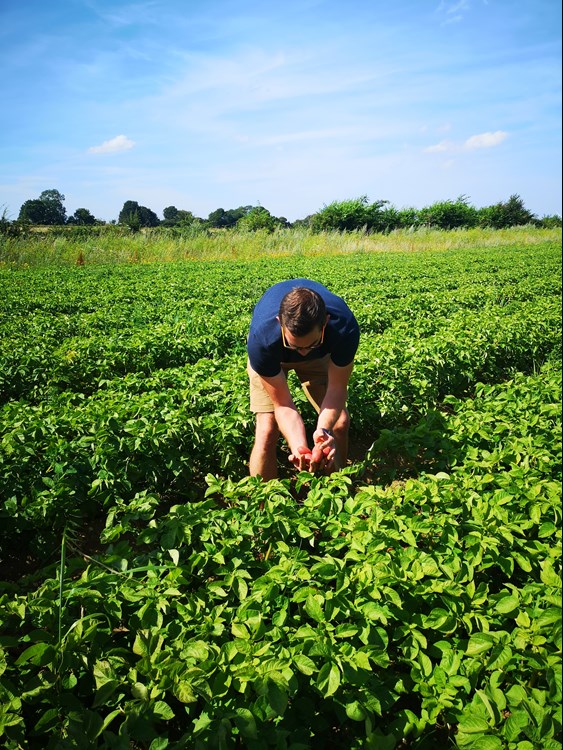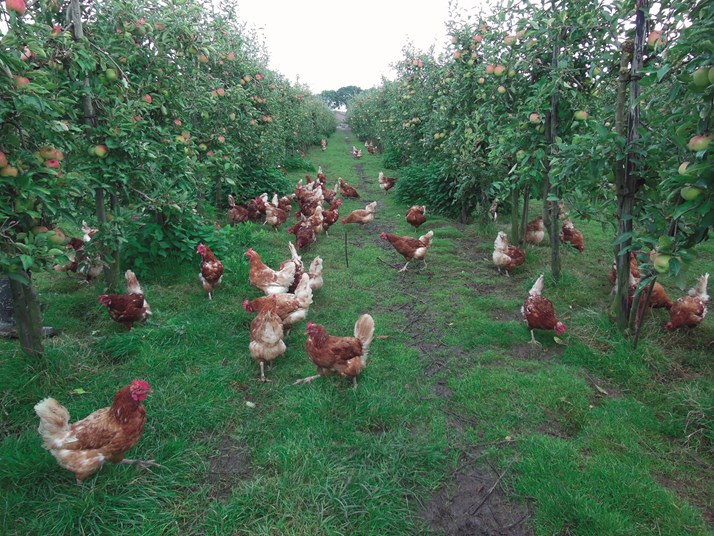What are the challenges facing the horticulture sector, and what does this mean for growers, consumers and everyone in between?
Our Horticulture Advisor Carolyn Coxe looks at how the Covid-19 pandemic and Brexit have shone a spotlight on how food reaches our shelves (or doesn’t), and how this goes hand in hand with food wastage on farm.
Exploring the complexities of our horticulture supply chains, and the external forces bringing them to breaking point, gives us an opportunity to examine how things could be if we found a way to diversify our food system, improving resilience by spreading the weight of risk and responsibility between growers, retailers and consumer.
The current context for UK horticulture
So much has changed since March 2020. People have discovered the joys of eating home-grown food, while demand for local hit an all-time high during lockdown. Home working, and especially home learning, presented opportunities to get cooking and to understand how food systems operate, from field to fork.
The National Food Strategy tells us we are currently 77% self-sufficient in the foods we can grow in our current climate, leading to 64% self-sufficiency overall. Whilst self-sufficiency does not directly translate into to food security, there is room for significant growth of consumption of British produce grown in line with the highest environmental standards of production on the planet.
In theory then, the horticultural industry has never been better placed to help us all develop our understanding of how we can be part of the change to a system striving for nutritionally dense food, produced in ways that enhance the environment.
Current challenges for UK growers
But we know there are significant challenges at present, largely centred around lack of labour, increasing costs of production, haulage availability, and uncertainty of farming policy and support.
The recent Anderson report The Potential Implications of Covid-19 for the Costs of Production of UK Fruit & Vegetables in 2020, funded through the NFU, highlighted that fruit and vegetable enterprises have incredibly high costs of production and are therefore vulnerable to cost inflation, alongside risks posed by weather and climate.
This increase is not entirely due to wages, but also subsidiary costs such as recruitment (due to reduced availability of people), increase in training (due to lack of returnees), adaptations in accommodation (to be attractive to scarce employees) and transport, to adjust to Covid-secure regulations when isolating and mitigating risk of spreading the virus. Alongside this, growers have had to adapt to ensure social distancing, increase use of PPE, rotate staff, and more frequent cleaning. All these measures result in reduction in productivity - again increasing cost.

The effect on horticulture businesses
In many cases growers have absorbed these rapid increases in costs under immense pressure, unable to reflect or forecast how these costs will affect the bottom line of their businesses at the end of season. This uncertainty will make for cautious planning for 2022 and is likely to lead to a request for increase on prices with their own customer base.
18 months of reduced labour availability and competition from other sectors has caused 20-30% of some crops to be left unharvested, resulting in huge wastage and financial penalty for growers. The logistical challenges around transporting short-shelf products has also led to wastage - packed products have remained uncollected or unable to complete their journey to point of sale.
Meeting the challenges for growers and workers
Faced with significant levels of adversity, some small and medium-sized growers have changed tack - diversified their customer mix, found ways of direct selling to shorter supply chains, or increased mechanisation to reduce labour dependency.
To combat the immediate labour crisis, many growers are increasingly willing to pay workers more. For many growers labour costs account for between 40-70% of their overall cost of production. Between 2016-2020, overall seasonal labour cost increased by at least 34%.
It’s also forced employees to take a closer look at the workplaces they’re offering existing and potential employees, and ask some searching questions: What would make this a better place to work? What facilities do you need? Can we offer a more flexible working approach. Do you need better training? Even, in some cases, would it help to have some 'skin in the game' and reap rewards for good overall business performance?
What can we learn about increasing UK-grown produce?
There have been significant successes to date in increasing the amount of UK grown produce.
Strawberries, for instance, have seen a 50% increase in production since 2010, driven through growers’ investments and innovation to enhance taste, flavour, crop performance and aid season extension. This extensive effort will be undermined if sustainable market pricing cannot reflect increased costs of production.
There’s another specific opportunity in orchard fruit, apples and pears in particular. We’ve seen a 6% and 10% drop in sufficiency respectively in the last 30 years (see the NFU’ British Food Leading the Way, 2021). The falling market has meant growers have not been able or eager to reinvest. Imported fruit is not always produced in line with the UK standards, so growers in the UK are not able to compete on price.

It’s something to think about, especially as agroforestry is recognised as having a positive impact on the farmed environment, and in many cases comes with grants and payments (see our Agroforestry on your Farm section to find out more).
Some good news – and a possible way ahead for some businesses
Opportunity is driven through adversity and many growers have seen significant growth in sales since the start of the pandemic. This is not a great surprise as pre-2020, one third of all food consumed was outside the home, in schools, work-place canteens, high street eateries etc. When lock down was thrust upon us, we were looking for alternatives. Higher supermarket and farm gate sales offset other supply chains (in food service) which were bought to their knees overnight.
The Soil Association, Growing Communities and New Economic Foundation’s Farmer Focused Routes to Market report (published in April 2021) explores alternatives to the current food supply model. Based on the experience of Growing Communities, a community-led food retailing organisation in North London, the report highlights a model more akin to a partnership than the conventional supplier-consumer arrangement. It proffers benefits for both producer and consumer with growers seeing a substantial improvement in their financial wellbeing as a result of pre-agreed set prices for products paid for within two weeks, as well as planned volumes, preventing on-farm wastage.
Through box schemes and farmers’ markets, Growing Communities' customers become more aware of food provenance and forge stronger links with the food they eat and how it is produced.
In fact, the NEF report found that for every £1 spent through this model, a further £3.73 was generated in economic, social, commercial and environmental benefit.
A reported 85% of growers saw increased turnover and with greater financial stability these growing businesses can offer increased benefits for employees including job security, a real living wage as a minimum and access to subsidised lunches and childcare.
What happens next?
Whilst we have only scratched the surface of the complex and diverse system we have in the UK, there are things we can do to support a more sustainable way forward, for farmers, workers, citizens and the environment.
The great news for the horticulture sector, according to the National Food Strategy, is that eating more fresh fruit and vegetables will improve the health and wealth of the nation, reducing the burden on the NHS by improving our health, enhancing the environment by supporting those that are producing food that in turn enhances biodiversity. For growers and producers, the potential customer base has never been as large or as willing to engage. But there is a need to challenge our current supply models to benefit growing businesses and in turn ensure they can attract people to work within them with greater financial and social-economic benefits, all whilst ensuring they remain fit for the future.
And finally, we’d love to hear from you
Farmers and growers, we’d love to hear about your current experiences. We're interested to know what you’d like your customers to know about the issues you’re tackling. Are there ways a better-informed population can help?
Email your ideas to producer.support@soilassociation.org.


